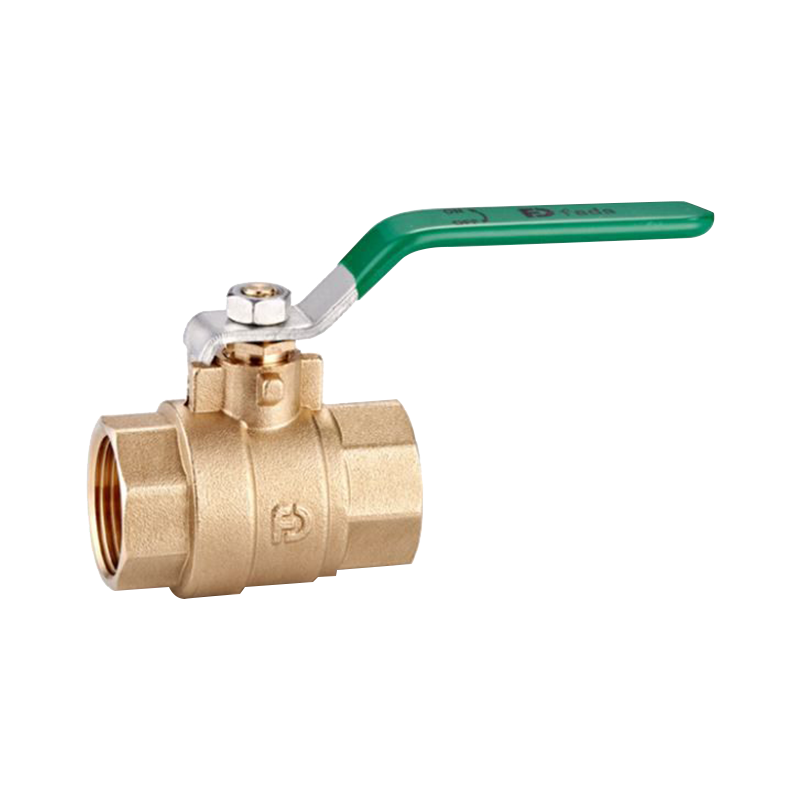As a manufacturer involved in the production of plumbing and fluid control components, we have seen a growing emphasis on health, safety, and environmental responsibility. One result of this trend is the increasing demand for Lead-Free Brass Valves, particularly in potable water systems and other sensitive applications. These valves, designed to meet strict regulatory standards, play a crucial role in modern plumbing and fluid distribution networks. Understanding the various types of Lead-Free Brass Valves and their intended uses is essential for professionals in plumbing, HVAC, and industrial applications.

Manufacturing Lead-Free Brass Valves involves using alternative alloy compositions that still provide the strength, corrosion resistance, and machinability required for valve components. These alloys often include elements like silicon or bismuth as substitutes for lead.
Among the widely used types, Lead-Free Brass Ball Valves are known for their simple design and reliability. These valves feature a spherical closure unit (the "ball") with a hole in the center, which rotates to control flow. When the hole is aligned with the pipe, flow occurs; when rotated 90 degrees, the valve is closed.
Lead-Free Brass Ball Valves are commonly used in residential and commercial water systems. Their quick shut-off capability and compact design make them suitable for cold and hot water lines. In our manufacturing process, we focus on ensuring that the ball surface is smooth and corrosion-resistant, which extends service life and maintains flow efficiency.
Another traditional type is the Lead-Free Brass Gate Valve, which operates by raising or lowering a gate (or wedge) inside the valve body. These valves are used in systems where the valve remains fully open or fully closed, rather than throttling flow.
Lead-Free Brass Gate Valves are preferred in applications such as main water supply lines where minimal pressure drop and a clear flow path are required. Although they take more turns to operate compared to ball valves, they offer precise shut-off for larger systems. As manufacturers, we engineer these valves with robust stems and high-precision threads to ensure reliability over long-term use.
The Lead-Free Brass Check Valve is a one-way valve that prevents backflow in a pipeline. This function is essential in potable water systems, irrigation lines, and boiler systems to maintain unidirectional flow and protect against contamination.
There are several designs within this category, including swing-type and spring-loaded check valves. In producing Lead-Free Brass Check Valves, we focus on achieving tight sealing and low cracking pressure to ensure they function efficiently even at low flow rates.
Commonly used at the point of use (such as under sinks or behind toilets), Lead-Free Brass Angle Valves control the flow of water from the main supply to individual fixtures. They are designed to turn water on or off quickly and are typically operated manually.
Due to their visibility and frequent operation, Lead-Free Brass Angle Valves are manufactured with attention to both function and appearance. We polish and plate these valves for durability and aesthetics, and ensure the handles operate smoothly without sticking or leaking.
Lead-Free Brass Stop Valves are similar in function to angle valves but are installed in-line with the piping rather than at a 90-degree angle. They are used for shut-off at various points in a plumbing system and are particularly common in utility areas, water heater connections, and irrigation systems.
These valves are often subject to prolonged periods of inactivity, so as manufacturers, we incorporate corrosion-resistant internal components and use high-quality sealing materials to ensure performance when reactivated.
A specialized type of valve, the Lead-Free Brass Pressure Relief Valve is designed to protect systems from over-pressurization. It automatically opens when pressure exceeds a preset level, releasing fluid to prevent damage.
These valves are critical in water heaters, boilers, and closed plumbing systems. The manufacturing of Lead-Free Brass Pressure Relief Valves requires precision calibration and strict testing to ensure reliable activation at the correct pressure threshold.
 +86-576-82686004
+86-576-82686004
 allen@badavalve.com / daisy@badavalve.com
allen@badavalve.com / daisy@badavalve.com





 EN
EN
 Español
Español










